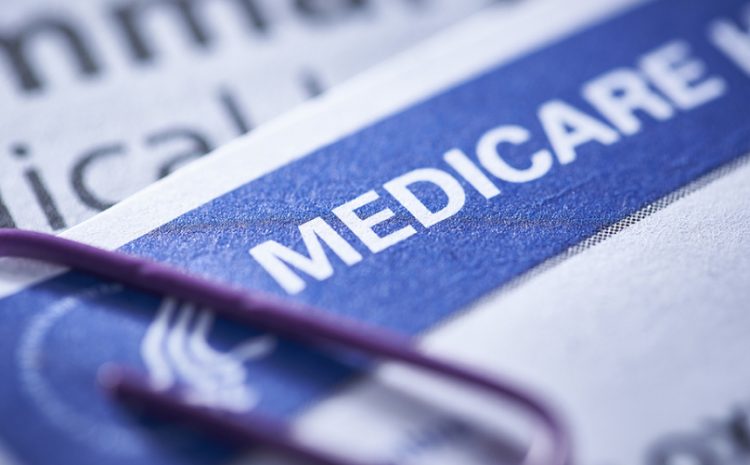

Principal writer, insurance and medicare advisory
MedicarePal principal writer Derick Dolivo covers Medicare. Smith believes in the power of education to help individuals make smart financial decis
- Written on August 10, 2025
- Updated August 17, 2025
At MedicarePal we strive to help you make smarter financial decisions. While we adhere to strict
Key Principles
We value your trust. Our mission is to provide readers with accurate and unbiased information, and we have editorial standards in place to ensure that happens. Our editors and reporters thoroughly fact-check editorial content to ensure the information you’re reading is accurate. We maintain a firewall between our advertisers and our editorial team. Our editorial team does not receive direct compensation from our advertisers.
MedicarePal follows a strict editorial policy, so you can trust that our content is honest and accurate. Our award-winning editors and reporters create honest and accurate content to help you make the right financial decisions. The content created by our editorial staff is objective, factual, and not influenced by our advertisers.
We’re transparent about how we are able to bring quality content, competitive rates, and useful tools to you by explaining how we make money.
Medicarepal is an independent, advertising-supported publisher and comparison service. We are compensated in exchange for placement of sponsored products and, services, or by you clicking on certain links posted on our site. Therefore, this compensation may impact how, where and in what order products appear within listing categories, except where prohibited by law for our mortgage, home equity and other home lending products. Other factors, such as our own proprietary website rules and whether a product is offered in your area or at your self-selected credit score range can also impact how and where products appear on this site. While we strive to provide a wide range offers, Bankrate does not include information about every financial or credit product or service.
Medicare and Medicaid are two essential healthcare programs in the United States, but they serve distinct purposes, target different populations, and have varying eligibility criteria. Understanding the differences between Medicare and Medicaid is crucial for beneficiaries, caregivers, and those seeking healthcare assistance. In this comprehensive guide, we will explore the key distinctions between these two programs, shedding light on their eligibility requirements, coverage, funding sources, and purposes.
Eligibility Criteria
- Medicare:
- Medicare is primarily designed for individuals aged 65 and older, regardless of their income or financial status.
- Individuals under 65 with certain disabilities, such as those receiving Social Security Disability Insurance (SSDI) benefits, can also qualify for Medicare.
- People of any age with end-stage renal disease (ESRD) or amyotrophic lateral sclerosis (ALS) are eligible for Medicare.
- Medicaid:
- Medicaid is a joint federal and state program that primarily serves low-income individuals and families.
- Eligibility for Medicaid varies by state, but it typically covers low-income adults, children, pregnant women, elderly individuals with limited income and resources, and people with disabilities.
- The Affordable Care Act (ACA) expanded Medicaid eligibility in many states, allowing coverage for more low-income adults.
Coverage
- Medicare:
- Medicare provides comprehensive coverage for healthcare services through its different parts:
- Part A (hospital insurance) covers inpatient hospital care, skilled nursing facility care, hospice care, and some home healthcare services.
- Part B (medical insurance) covers doctor’s visits, outpatient services, preventive care, and durable medical equipment.
- Part C (Medicare Advantage) allows beneficiaries to receive their Medicare benefits through private insurance plans that often include prescription drug coverage and extra benefits like dental, vision, and fitness programs.
- Part D provides standalone prescription drug coverage.
- Medicare provides comprehensive coverage for healthcare services through its different parts:
- Medicaid:
- Medicaid offers a broader range of healthcare services but varies by state. Commonly covered services include doctor visits, hospital care, prescription drugs, preventive care, dental services, and mental health services.
- Some states also offer Medicaid programs specifically designed to support long-term care services, including nursing home care and home and community-based services (HCBS).
Funding Sources
- Medicare:
- Medicare is primarily funded by the federal government through payroll taxes paid by workers and their employers during their working years.
- Beneficiaries may also pay premiums and out-of-pocket costs for certain services.
- Medicaid:
- Medicaid is a joint federal and state program, with the federal government providing a significant portion of the funding.
- States administer their Medicaid programs and contribute varying amounts of funding based on their financial capacity and policy decisions.
Purpose
- Medicare:
- Medicare’s primary purpose is to provide healthcare coverage to individuals aged 65 and older, as well as those with disabilities and specific medical conditions.
- It aims to ensure that older Americans and those with disabilities have access to essential healthcare services.
- Medicaid:
- Medicaid serves as a safety net program, offering healthcare coverage to low-income individuals and families who may not have access to private health insurance.
- Its purpose is to provide access to vital healthcare services and reduce disparities in healthcare access and outcomes.
Coordination with Other Coverage
- Medicare:
- Beneficiaries can have Medicare as their primary coverage and may purchase additional coverage, such as Medicare Supplement Insurance (Medigap) policies or Medicare Part D prescription drug plans, to fill gaps in their coverage.
- Medicaid:
- Medicaid often serves as secondary coverage for individuals who are eligible for both Medicare and Medicaid, commonly referred to as “dual-eligible” beneficiaries.
- Medicaid can help cover Medicare premiums, cost-sharing, and services not covered by Medicare.
Enrollment and Administration
- Medicare:
- Medicare enrollment is typically automatic for individuals aged 65 and older who are receiving Social Security or Railroad Retirement Board (RRB) benefits.
- Beneficiaries can manually enroll in Medicare during specific enrollment periods, such as the Initial Enrollment Period (IEP) or the General Enrollment Period (GEP).
- Medicaid:
- Medicaid enrollment is administered by individual states, and eligibility criteria, application processes, and enrollment periods can vary.
- Applicants must apply directly through their state’s Medicaid agency.
Medicare and Medicaid are both crucial components of the U.S. healthcare system, but they serve different populations and have distinct purposes. Medicare primarily provides coverage to older adults and individuals with disabilities, while Medicaid focuses on providing healthcare access to low-income individuals and families. Understanding the differences between these programs is essential for individuals, caregivers, and healthcare professionals to ensure that eligible individuals receive the appropriate coverage and support for their healthcare needs.
Was this page helpful?
Medicare Pal adheres to stringent sourcing guidelines, prioritizing primary sources including medical organizations, government agencies, academic institutions, and scholarly journals with peer review. Discover the methods we use to guarantee the accuracy, comprehensiveness, and impartiality of our content in our editorial guidelines.

Do You Need Help With Medicare?
Call us Now 1-866-706-7293










